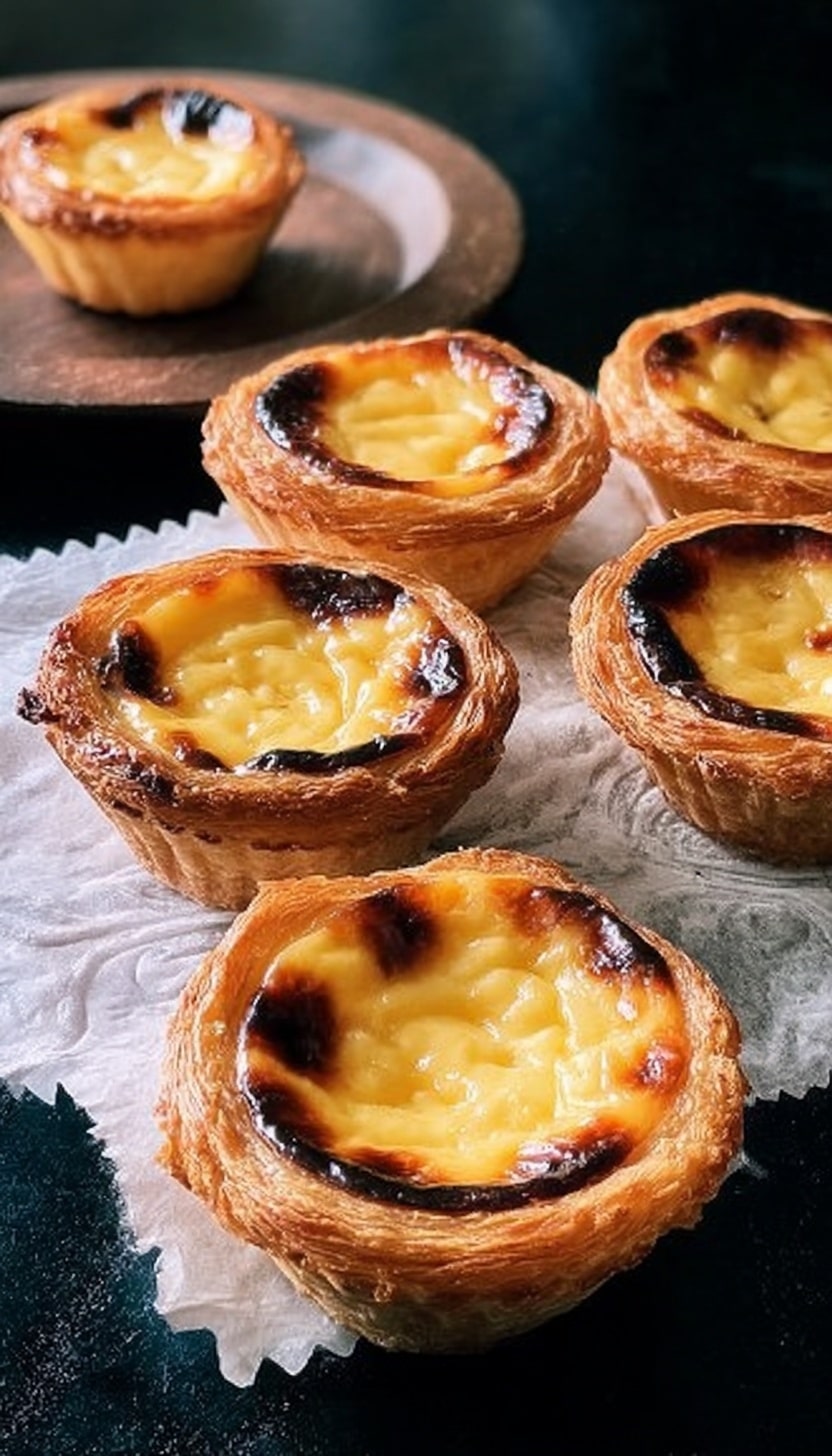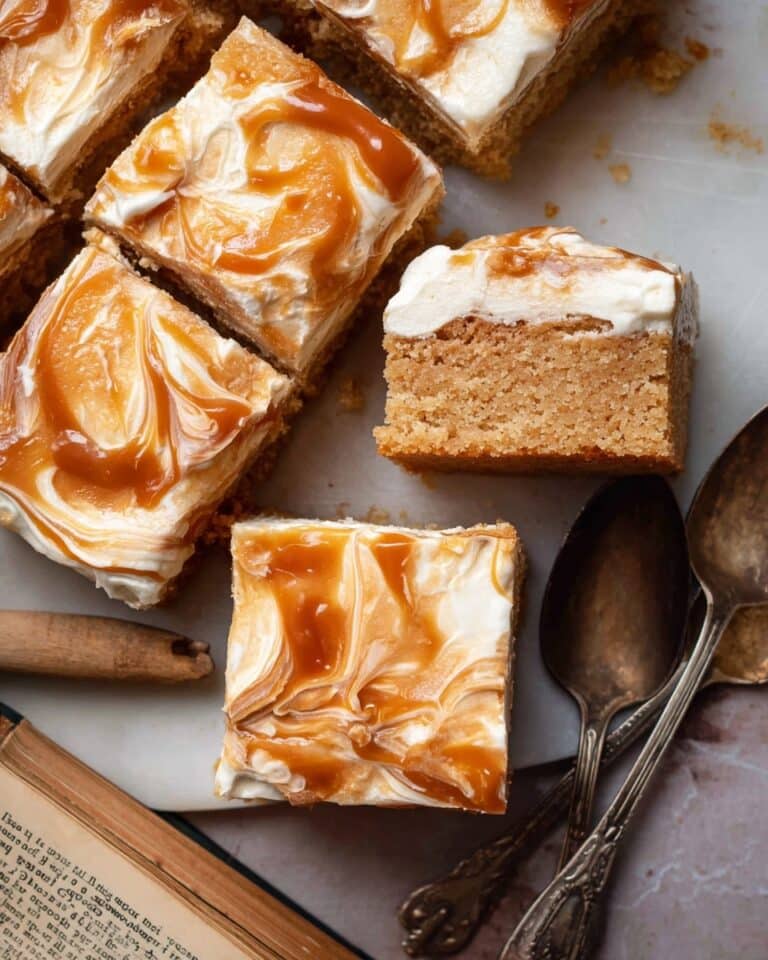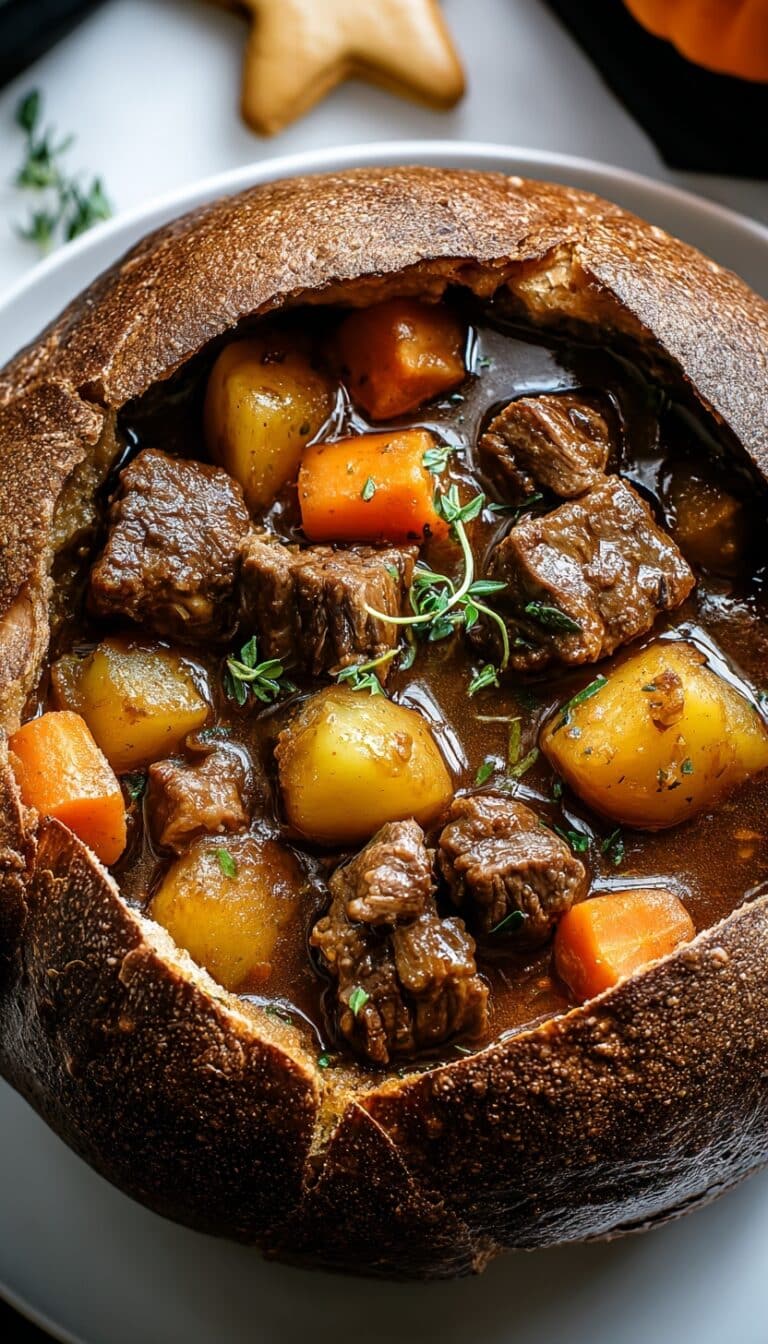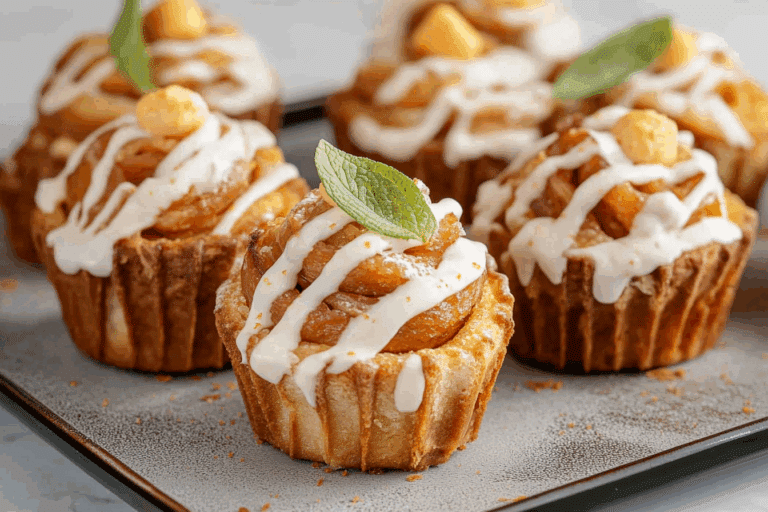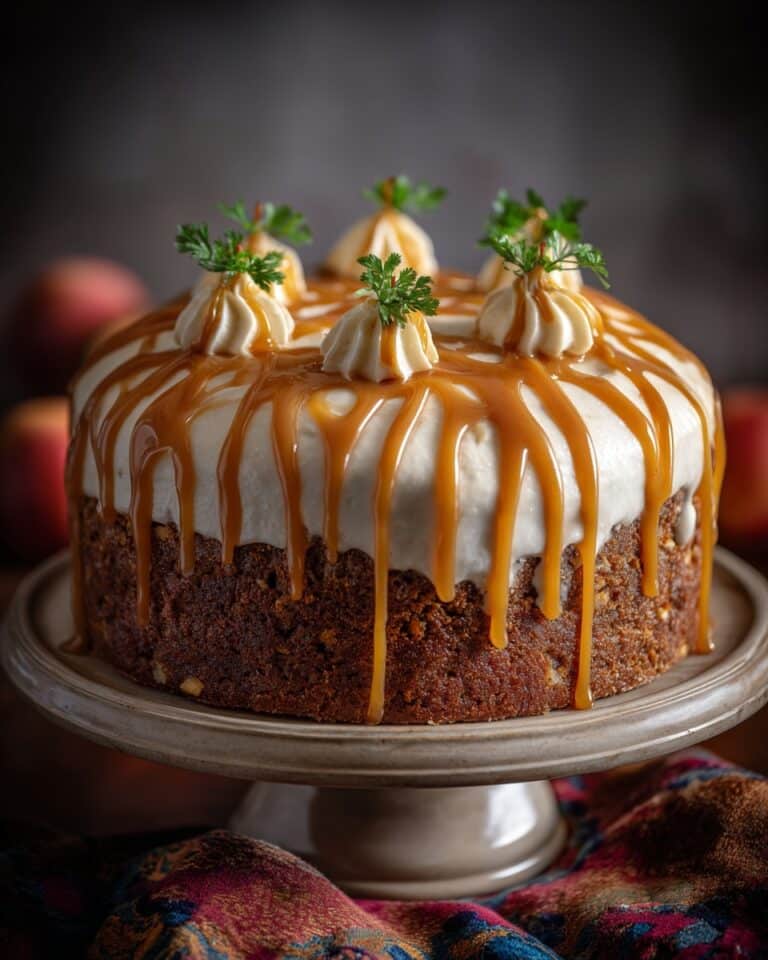Portuguese Custard Tarts (Pasteis de Nata) Recipe
If you’ve ever wandered through the winding streets of Lisbon or sat in a cozy café in Macau, you might have tasted the heavenly delight that is Portuguese Custard Tarts (Pasteis de Nata). These little tarts have a flaky, buttery crust and a lusciously creamy custard center that’s caramelized just right on top. They’re not just any dessert—they’re a celebration of simple ingredients transformed through technique and love. Anytime you’re craving a sweet snack that feels both nostalgic and fancy, this Pasteis de Nata recipe is your kitchen passport to Portugal’s iconic treat.
One thing I absolutely adore about this Portuguese Custard Tarts (Pasteis de Nata) Recipe is how they come together with that perfect balance of crispy puff pastry and silky custard that wobbles slightly when fresh from the oven. They’re fantastic for a weekend brunch, an afternoon tea, or even a dinner party where you want to surprise your friends with something impressive yet homey. I can’t wait to share some of my favorite tips, so you don’t just make tarts—you make magic!
Ingredients You’ll Need
Each ingredient plays a special role in making these tarts sing. Especially with the custard, getting the right creaminess and vanilla undertone is key, and I’ll share some subtle tips on choosing the best components.
- Rough puff pastry: Homemade truly makes all the difference here. The buttery, flaky layers add the perfect crunch and texture that store-bought just can’t capture. If you’re pressed for time, look for high-quality pastry sheets, but I promise the effort to make your own is worth it.
- Heavy cream: Look for cream with around 35% fat to ensure your custard is rich and silky.
- Sugar: Granulated white sugar is best for this recipe as it dissolves smoothly into the custard mixture.
- Whole milk: Full-fat milk adds the creamy backbone to the custard—don’t swap for low fat or plant-based if you want authentic richness.
- Egg yolks: These give the custard its yellow color and creamy texture; freshness matters here for the best taste and safety.
- Cornstarch: This thickens the custard just enough without making it gummy. Don’t skip it!
- Vanilla extract: Pure vanilla makes a big flavor difference—avoid imitation extracts for that delicate floral hint.
Variations
I love making this recipe my own by adjusting a few elements—whether it’s for a seasonal twist or to suit different dietary needs. Feel free to experiment and find your perfect version.
- Cinnamon Sprinkle: I sometimes dust a little ground cinnamon on top before baking; it adds a warm, festive note that’s especially nice in winter.
- Gluten-Free Pastry: For friends who avoid gluten, swapping to a gluten-free puff pastry blend works well, though the texture differs slightly.
- Reduced Sugar: I’ve tried cutting the sugar by about a third for a lighter tart, which still tastes great if you prefer less sweetness.
- Citrus Zest: Adding a hint of lemon or orange zest into the custard brings a bright, fresh flavor twist that I adore on sunny days.
How to Make Portuguese Custard Tarts (Pasteis de Nata) Recipe
Step 1: Preparing Your Puff Pastry Base
First things first, roll out your homemade rough puff pastry into a thin rectangle—around ⅛ inch thick. I usually chill it a bit beforehand to make it easier to handle. Then, cut out circles large enough to line your tart tins or muffin tray, gently pressing the dough into the molds to create lovely little shells. Don’t stretch the dough; just coax it into place so it stays flaky and rises properly.
Step 2: Making the Silky Custard Filling
In a saucepan, whisk together the milk, heavy cream, sugar, and vanilla extract over medium heat until the sugar dissolves, but don’t bring it to a boil just yet. In a separate bowl, mix your egg yolks and cornstarch until smooth. Slowly pour the warm milk mixture into the yolks, whisking constantly to temper the eggs. Then, return everything to the pan and cook gently, stirring continuously, until it thickens just enough to coat the back of a spoon. Remember, slow and steady wins here to avoid curdling.
Step 3: Filling and Baking Your Tarts
Pour your luscious custard into the pastry shells, filling them almost to the top but leaving a little room for expansion. I find it helps to tap the tray gently on the counter to settle the custard and avoid bubbles. Bake at a blistering 230°C (about 450°F) for 15–17 minutes until the pastry is golden and the custard has those signature blistered spots on top. Keep an eye on them—those brown patches are the hallmark of a perfect Pastel de Nata.
How to Serve Portuguese Custard Tarts (Pasteis de Nata) Recipe

Garnishes
My go-to garnish is a simple dusting of ground cinnamon and powdered sugar just before serving—it elevates the flavor without overpowering the custard’s delicate balance. Sometimes, I like a little grated lemon zest on top to add freshness, especially if I didn’t add it in the custard itself.
Side Dishes
These tarts are delightful on their own, but I’ve found that serving them alongside a strong espresso, a rich Portuguese coffee, or even a lightly brewed black tea brings out their richness even more. If it’s brunch, fresh fruit or a simple mixed berry salad makes a nice, refreshing contrast.
Creative Ways to Present
For special occasions, I like to place the tarts on a rustic wooden platter lined with parchment, sprinkled with edible flowers or fresh mint leaves for color. You can also serve mini tarts on tiered dessert stands for an elegant touch that feels just right for celebrations or afternoon teas.
Make Ahead and Storage
Storing Leftovers
Portugues Custard Tarts (Pasteis de Nata) are best eaten fresh, but if you have leftovers, store them in an airtight container at room temperature for up to 1 day. After that, refrigeration is your friend to keep the custard from spoiling, but just know the pastry might lose a bit of its crispness.
Freezing
I’ve frozen these tarts before and they do freeze well—wrap each tart individually in plastic wrap, then store them in a freezer bag for up to 2 months. When you’re ready to enjoy, thaw overnight in the fridge before reheating.
Reheating
To bring back that fresh-baked feel, I reheat leftover tarts in a preheated oven at 180°C (350°F) for around 7–10 minutes. Avoid microwaves—they soften the pastry too much and make the custard rubbery. With the oven method, you’ll get a warm custard and a flaky shell just like the day they were baked.
FAQs
-
Can I use store-bought puff pastry for Portuguese Custard Tarts?
While it’s possible to use store-bought puff pastry, I highly recommend making your own rough puff pastry for the best texture and flavor. Store-bought pastries often lack the buttery crispiness and can make the tarts feel less authentic. If you’re short on time, look for a high-quality brand, but nothing compares to homemade!
-
Why does the custard have those brown spots on top?
Those beautifully caramelized brown spots are a signature feature of Pasteis de Nata and come from baking the custard at a high temperature to slightly scorch the surface. This gives a hint of caramel flavor and a lovely Instagram-worthy look!
-
How can I prevent the custard from curdling?
To avoid curdled custard, cook it slowly over medium to low heat while stirring constantly. Tempering your egg yolks by slowly mixing in the warm milk mixture will help prevent the eggs from scrambling. Patience here leads to smooth, creamy custard.
-
Can I make the tarts dairy-free or vegan?
This traditional recipe relies on dairy for its signature richness, but you could experiment with coconut cream and plant-based milk alternatives. Keep in mind, the texture and flavor will be different, and the pastry might need alternative fats like vegan butter to replicate the flakiness.
-
What’s the best way to reheat leftover tarts?
Reheating in a conventional oven at 180°C (350°F) for about 7–10 minutes restores both crisp pastry and warm custard. Avoid microwaving, which can make the pastry soggy and the filling rubbery.
Final Thoughts
For me, Portuguese Custard Tarts (Pasteis de Nata) are a joyful reminder that a few humble ingredients combined with a bit of patience can create something truly extraordinary. Each bite is a little escape to Lisbon’s sunny streets or Macau’s charming cafés. I hope you’ll take this recipe to your kitchen and enjoy the process as much as I do—there’s something magical about sharing these tarts fresh from your own oven with friends and family. Go ahead, give it a try—you’ll be so glad you did!
PrintPortuguese Custard Tarts (Pasteis de Nata) Recipe
Portuguese Custard Tarts, also known as Pasteis de Nata, are a classic Portuguese dessert featuring a crispy, flaky puff pastry crust filled with a rich, creamy egg custard that is caramelized on top. This recipe uses homemade rough puff pastry for an authentic texture and flavor, combined with a smooth custard made from cream, milk, sugar, egg yolks, cornstarch, and vanilla extract. Perfect for satisfying your sweet tooth with a traditional Portuguese treat.
- Prep Time: 30 minutes
- Cook Time: 15 minutes
- Total Time: 45 minutes
- Yield: 8-10 tarts
- Category: Dessert
- Method: Baking
- Cuisine: Portuguese
Ingredients
Puff Pastry
- 420 g homemade rough puff pastry
Custard Filling
- ½ cup heavy cream (35% fat dairy cream, 118 ml)
- ½ cup granulated white sugar (115 g)
- 1¼ cup whole milk (300 ml, 3.5% milk fat)
- 2 egg yolks
- 4 teaspoons cornstarch (11 g)
- 1¼ teaspoon vanilla extract
Instructions
- Prepare the Puff Pastry: Roll out the homemade rough puff pastry to a thickness of approximately 3 mm. Cut the dough into circles large enough to fit into your tart pans or muffin tin, making sure there is enough dough to line the sides. Gently press the dough circles into the tart molds, trimming any excess dough. Chill the pastry in the refrigerator for 15-20 minutes to help maintain its shape when baking.
- Make the Custard: In a medium saucepan, combine the heavy cream, whole milk, and granulated sugar. Heat gently over medium-low heat, stirring occasionally until the sugar is fully dissolved and the mixture is warm but not boiling. In a small bowl, whisk the egg yolks with the cornstarch until smooth. Slowly pour a small amount of the warm milk mixture into the egg yolks while whisking constantly to temper the eggs. Then pour the egg yolk mixture back into the saucepan with the remaining milk mixture, stirring continuously over low heat.
- Cook the Custard: Stir the custard mixture over low heat for about 5-7 minutes until it thickens enough to coat the back of a spoon. Remove from heat and stir in the vanilla extract. Allow the custard to cool slightly before filling the pastry shells.
- Fill and Bake: Preheat your oven to 240°C (464°F) or as high as your oven allows for caramelization. Pour the custard evenly into the chilled puff pastry shells, filling them almost to the top. Bake for 12-15 minutes or until the custard is golden brown and caramelized on top, and the pastry is crisp. Watch the tarts closely to prevent burning, as high temperature baking is essential for the characteristic spots on the custard surface.
- Cool and Serve: Remove the tarts from the oven and let them cool in the pan for 5-10 minutes before transferring them to a wire rack to cool slightly more. Serve warm or at room temperature for the best texture and flavor experience.
Notes
- For the most authentic flavor and texture, use the homemade rough puff pastry as indicated; store-bought puff pastry will not achieve the same crispiness and flakiness.
- The high temperature baking is crucial to get the signature caramelized spots on the custard surface.
- Make sure to temper the egg yolks carefully to avoid curdling the custard.
- Egg yolks can be refrigerated and used within a day or two if not used immediately.
- These tarts are best enjoyed fresh but can be stored in an airtight container in the fridge for up to 2 days. Reheat briefly in a hot oven to restore some crispiness.

